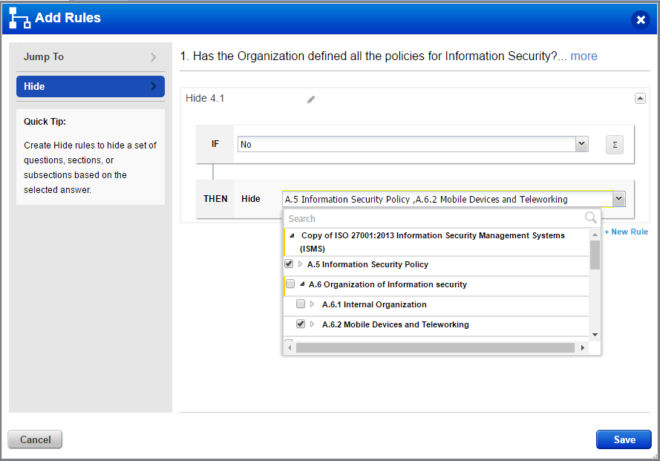Dynamic Questionnaire: Accelerate Quick and Efficient Responses with Question Gating
As you roll out Security Assessment Questionnaire to your vendors and internal stakeholders, it is necessary to avoid lengthy questionnaires containing many sections with questions that are not relevant to their area of work. It is important that respondents don’t get overwhelmed and spend a lot of time and effort in sifting through all the questions deciding for themselves whether a section or a question is relevant or applicable to them. Invariably, this results in delays in getting their responses back to you.
The latest version of Security Assessment Questionnaire enables you to use a gating mechanism for controlling the flow of your questionnaire. You can now decide which questions or sections a respondent can see, based on his response to a question or a combination of questions. This makes it easier for respondents to see and respond to only relevant sections and questions thereby making the entire exercise more time-efficient for them. It is also easier for you to analyze all the consolidated responses.
Getting Started with Question Gating
Here is a quick run-down on how this works.
Simply create rules while configuring the template, to dynamically show or hide questions. When a questionnaire using this template is sent to the responder, depending on the answers given, questions, sections or subsections will be dynamically hidden or shown.

Add Jump To rule to configure which question the user should be shown next if a particular answer is selected for that question

Add Hide rule to configure which question, section or subsection should be hidden from the user if a particular answer is selected.
